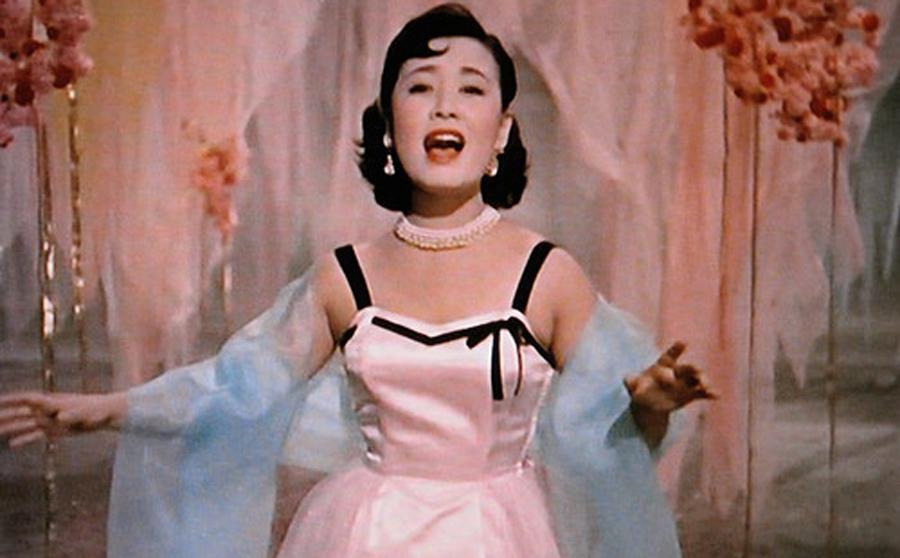To the casual audience of Japanese popular culture and media, the image of the Japanese teenage girl has long been a staple of various trends. Foreign countries such as the United States tend to have different perceptions of these Japanese girls that span from the kawaii or cute culture to hypersexualised objects of entertainment that typically depict a girl warrior or sailor girl in provocative clothing.
There is more to girls than what this representation in anime and manga creates for teenage boys. The conservative, pure image of girls does exist in Japanese films and other media but rarely gets shown to the rest of the world. Defining the face of the Japanese young woman was a widely discussed matter of national identity after World War II and the American Occupation.
The criticism and transformation involved in girlhood can be found in the life and career of Misora Hibari, the most popular female star during the post-war season. Find out how the idea of girlhood evolved and understand what it means to be female in Japan by looking at her career through the years.
Young Misora Hibari and the Kasutori Culture

In 1946, Misora Hibari started her career as a singer during the American Occupation, where experimentations of popular culture took place frequently. Hibari took the stage as a nine-year-old child prodigy with an unlikely mature personality. Her performances were imitations of acts of adult women, particularly Kasagi Shizuko, who often sang the American boogie-woogie. The actions of Kasagi were known to be daring, sensual, and erotic. Because of this, Hibari was criticised by the public for portraying these characteristics.
Hibari’s style can be attributed to the trends that emerged at the beginning of her career. Her life as a stage performer started while the Kasutori Culture was flourishing. Kasutori came directly from the liquor name that fueled artists’ and writers’ muddled thinking and creation. Outputs brought upon in this culture favoured physical (and usually sexual) experiences, ranging from striptease acts or nikutai bungaku (literature of the flesh). The sexuality and intensity of its audience was a factor that helped Hibari rise to fame as she imitated sexual songs by adult performers.
As Hibari moved from the local stage to the national film scene, complaints towards her adult image increased. The kasutori culture was starting to die down, and people had a more pure and chaste idea of girlhood. When Hibari appeared in the film “Proud of My Voice – Crazy Age” in 1949, the studio audience applauded her imitations. Still, the announcer cut it off, saying that it was a bad influence for a child to sing an adult song. Critics had a deeper concern that Hibar’s stardom would influence the sexualisation of teenage girls. Hence, here acts awakened Japan’s neglect of declining morals after their defeat and occupation.
Character Transformation in ‘Sorrowful Whistle’

From kasutori, a more sanitised popular culture emerged in the nation during the early 1950s. This was connected to Misora Hibari’s changed imaged as an imitator of adult artists. She starred in a transformed role in Sorrowful Whistle, which presented the reconciliation of her childlike self with her adult personality through film.
In Sorrowful Whistle, Hibari’s character was a war orphan with much innocence as a child. It still showcased her talent in singing through the song Sorrowful Whistlewhic, which highlighted how her image onscreen was refreshed as childlike and modest.
The film tamed the eroticism found in the song by transforming the lyrics’ meaning from sexual love between older individuals into a familial love between a brother and a sister. Hibari’s character is Tanaka Mitsuko, who is looking for her older brother Kenzo, a soldier sent back to their country (which was played by Hara Yasumi). Before returning to the frontline as a composer, Kenzo taught his younger sister Mitsuko how to play his unpublished song called Sorrowful Whistle.
The song becomes a sign of their affection for one another and a way to communicate their hope to see each other again. Whenever she talks about her brother, Mitsuko repeatedly mentions the line “We’ll meet again someday” (itsuka mata au), which ties the song’s message to the film’s main conflict: her separation from her older brother. Through the new meaning of the lyrics, the film tames sexuality in the song and appropriates its theme for an eleven-year-old character.
When the time came for the character Mitsuko to be reunited with her brother, Hibari Hibari represents the hundreds of women and girls still awaiting brothers, fathers, and spouses who would never return home from the war.
The rebranding of Hibari as a good, pure, and obedient girl inspired different film studios to star new girls in the remakes of her films. In the latest movies, a new actress was cast in a prominent role played by Hibari, but the image of a good girl was emphasised as important and necessary.
Over the 1960s and 1970s, the national girl star began to take shape, reflecting a discourse about how Japanese females should behave. The five postwar remakes of The Izu Dancer, which stars a teenage girl as the primary role, demonstrated this. The Izu Dancer was initially adapted into a film in 1933 before World War II and starred Tanaka Kinuyo. It was first published as a short story by author Kawabata Yasunari in 1926.

The first remake of The Izu Dancer, starring Misora Hibari and released in 1954, changed the plot from a contemporary melodrama to a period piece, revealing the postwar attempt to redefine appropriate teenage girl behaviour in terms of authentically Japanese pre-war culture, uninfluenced by American Occupation. The teen female character’s obedience and submissiveness are connected to the rural pre-war setting in the film’s subsequent remakes, acting as a model of acceptable Japanese girl behaviour.
The intentional marketing of girl stars was enabled by the power of the studio system, which had control over all production areas – from filming to publicity – a setup very similar to what Hollywood was practising in the 1930s and 1940s. In the example of Misora Hibari, limiting her individuality by reinventing her as an idealised model of female behaviour was part of transforming her from a disruptive, contentious child prodigy to a film star with wide appeal.
As John Anderson and Donald Richie described her: “No matter the film, her role is the same. She is the conventional, traditional daughter of old Japan brought up to date. Though she likes to dance, sing, and play with boys, she is never really frivolous: she stands for reason, duty, obligation, and complete respectability”. Formulaic, predictable movies like The Izu Dancer worked well for studios to mould the image of the girl star throughout the 1970s.
The transformation of Hibari’s persona is a reflection of the cultural shifts that occurred in Japan in the years following the war, particularly the reassertion of indigenous cultural values. Yet more broadly, Hibari’s career exposes an inclination to simultaneously fetishize and reject the sexualization of young girl performers, which is not exclusive to Japan alone.











































